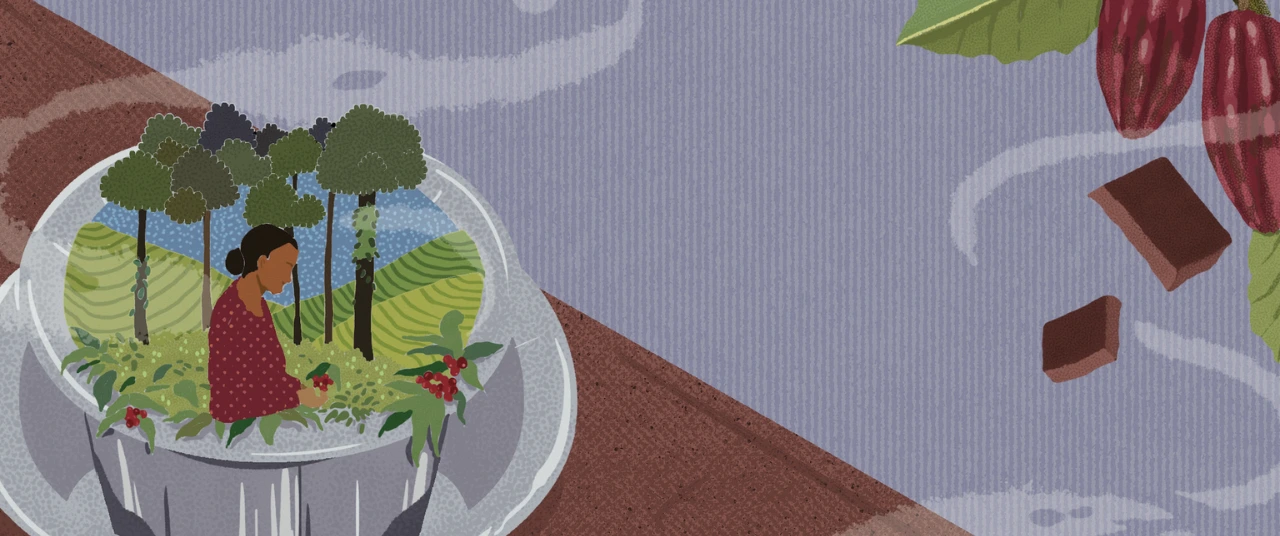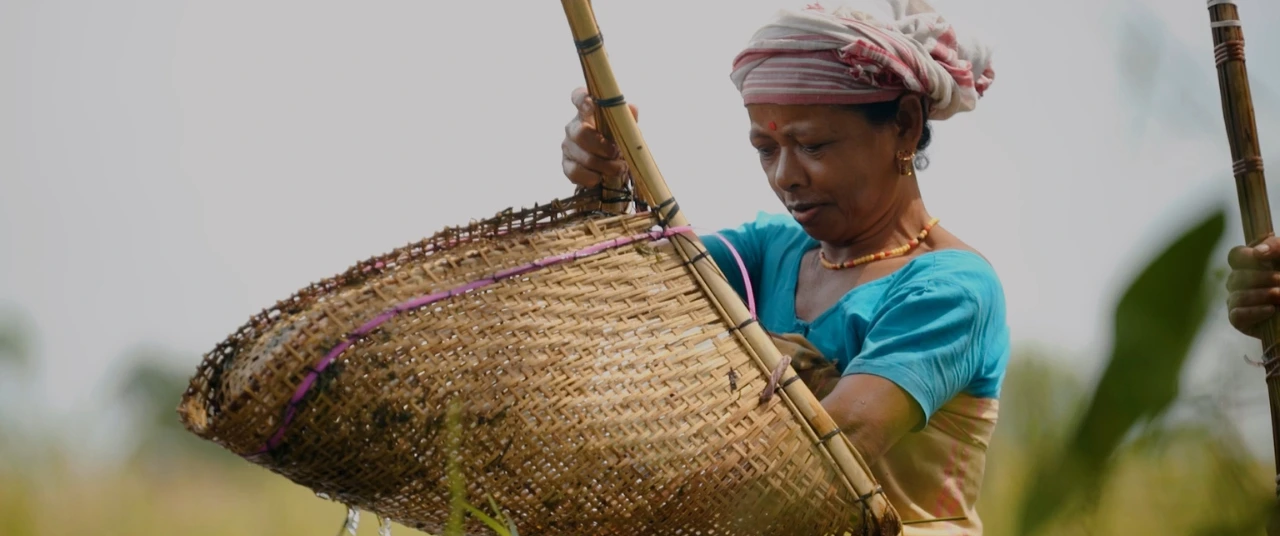Unusually high temperatures in the second fortnight of February and March were responsible for the low crop yields.






Bhupen Singh, a farmer in Punjab's Bathinda district, witnessed his wheat harvest shrivel in 2022 due to unusual heat, peaking at a scorching 44.1°C during critical growing months. “Unusually high temperatures in the second fortnight of February and March were responsible for the low crop yields. It affected the wheat during its critical milking stage, resulting in smaller grains. Crops also experienced browning, premature maturation and shrivelled grains. Farmers, like me, suffered heavy losses,” said Singh.
According to the Indian Council of Agricultural Research (ICAR), average wheat yields in the district plummeted from 58.2q/ha in 2021 to just 41.6q/ha in 2022. Heatwaves in 2023 and 2024 have also affected wheat crop yields in the region, although specific data on the losses is not yet available.

The heat is on
Our planet's temperature has been steadily rising. Since 1880, Earth's temperature has been rising by 0.08°C per decade. But since 1981, it's more than doubled to 0.18°C per decade. Globally, hot days are increasing while cold days are declining. Research published in Science Advances shows that heatwaves are becoming longer and slower, particularly in North America and Eurasia. From 1979-1983, the world averaged about 75 heatwave events. Fast forward to 2016-2020, and the number had increased to 98.
While a warmer planet poses severe health risks for humans, it also significantly impacts agricultural output. For India, home to over 1.4 billion people and ranked 111 out of 125 countries in the Global Hunger Index, this presents a serious problem.
Most India Meteorological Department (IMD) stations have recorded an increase in heatwave events from 1961 to 2020. This summer, the country faced its third consecutive year of severe heatwaves, with temperatures in northern India crossing 50°C. What's even more concerning is the trend of these heatwaves starting earlier, lasting longer, and affecting larger areas – a troubling shift from historical climate patterns.
Fields of fire
Studies project a temperature increase of 2.5 to 4.9°C across India, potentially leading to a decrease of 41%-52% in wheat yield and 32%-40% in rice production. This decline extends to most cereals, particularly in the Indo-Gangetic plains, where rising temperatures and reduced water availability are expected. Modelling approaches suggest a substantial loss in crop production, ranging from 10% to 40% by 2100.

“Some crops, vegetables, and fruits are more susceptible than others, depending on their genetic quality and agro-ecological needs,” said Anjani Kumar, senior research fellow at the International Food Policy Research Institute-South Asia.
Rain-fed crops: Crops, including sorghum, jowar, ragi, bajra, oilseeds, and vegetables, are particularly susceptible to longer dry spells, erratic rainfall patterns, and extreme heavy rain events. "These conditions could lead to lower yields per hectare or even crop failure, with a higher risk of pest infestations due to rising temperatures," said Shrinivas Badiger, PhD fellow at the Centre for Environment and Development, Ashoka Trust for Research in Ecology and the Environment.
Groundwater-irrigated crops: A warming climate accelerates groundwater depletion, threatening crops reliant on irrigation. "Higher temperatures elevate the water demand for evapotranspiration," said Badiger. "If this requirement isn't met, it will adversely affect yields even in irrigated regions." This could significantly impact water-intensive crops like sugarcane, rice, cotton, and wheat, making their cultivation increasingly challenging.
Quality matters
A 2019 United Nations report highlights the negative impact of climate change on staple crops, vital for global nutrition. While elevated CO2 levels may make vegetables like lettuce and tomatoes sweeter and increase yields, it comes at a cost. Studies show a decrease of 10 to 20% in protein, nitrate, magnesium, iron, and zinc content. Plants may lose up to 8% of their mineral content in these carbon-rich environments.
While elevated CO2 levels may make vegetables like lettuce and tomatoes sweeter and increase yields, it comes at a cost. Studies show a decrease of 10 to 20% in protein, nitrate, magnesium, iron, and zinc content. Plants may lose up to 8% of their mineral content in these carbon-rich environments.
This translates to a rise in hidden hunger, a condition where people experience undernutrition due to a lack of essential nutrients despite consuming enough calories. A policy note from the Gender, Climate Change, and Nutrition Integration Initiative predicts 138 million more people could be at risk of zinc deficiency and 148 million more at risk of protein deficiency globally by 2050.
The most vulnerable regions include South Asia, Southeast Asia, China, the Middle East and North Africa, where many are already near nutritional deficiency and rely heavily on wheat and rice. In India alone, an estimated 53 million people could become newly protein-deficient, and 48 million could become zinc-deficient under higher CO2 levels.
“The precise impact of heatwaves varies according to the type of crop, soil conditions, and the local climate. So, more comprehensive research is required to fully understand and verify these effects and their implications for food security and dietary quality,” said Suvarna Sawant, chief dietician and HOD, clinical nutrition & dietetics, Nanavati Max Super Speciality Hospital, Mumbai.
Coping strategies
Climate change demands a shift in dietary patterns, but the strategies differ across regions. In the West, reducing meat consumption is a major focus. However, meat and eggs remain essential protein sources in India, where consumption is already relatively low and these foods contribute significantly to meeting nutritional targets.
Substituting scarce items with readily available ones is another option, but challenges exist. No two foods are nutritionally identical, and even similar options can differ in calories, protein, and micronutrients.“For example, replacing whole grains with refined grains significantly reduces fibre and nutrient intake, while shifting from animal protein to plant-based alternatives requires careful consideration to balance amino acids and vitamins," said Sawant.
Here's where consumers can play a key role:
Reduce food waste: Globally, 931 million tonnes of food are wasted annually, contributing to 8-10% of carbon emissions. Reducing food waste lowers demand and mitigates further warming.
Prioritise fresh produce: Fresh, seasonal produce offers higher nutrient levels and fewer additives compared to processed foods.
Meanwhile, scientists and policymakers are working on equipping farmers with tools to manage losses:
Climate-resilient crops: Genome editing is making strides towards creating heat-resistant, nutritious crops. In 2021, Prime Minister Narendra Modi introduced 35 such varieties developed by ICAR, including drought-tolerant chickpeas and biofortified wheat, pearl millet, and maize. Biofortification is a process that increases the nutrient density of crops.
Weather information and agronomic practices: The IMD's Gramin Krishi Mausam Sewa scheme provides farmers with crucial weather and crop information to optimise production. "Farmers can adapt by diversifying crops, using resilient seed varieties, and modifying planting and irrigation practices," said Kumar.

For instance, in Uttar Pradesh this year, a 5°C rise in temperature resulted in mango flower drop and lots of jhumka problems in the fruit due to poor pollination. “To mitigate losses, we implemented ICAR-Central Citrus Research Institute (CCRI) and ICAR-Central Institute for Subtropical Horticulture’s advisories to initiate drip irrigation with organic mulching. Certain fungicides, such as copper oxychloride, were also recommended to control fruit infections that spike in rising temperatures,” said Uday Singh, a farmer in the Ayodhya district, where mangoes and guavas are the primary fruits grown.
The road ahead
There's no doubt that our planet is getting warmer, and heatwaves will only intensify. Only through informed, collaborative efforts at the community level and through government-led initiatives can India develop resilient food systems. Ongoing research and data collection can provide valuable insights, guiding effective interventions and policies aimed at preventing malnutrition, sustaining yields, and promoting overall health and well-being.
Explore other topics
References
1. Agricultural Technology Application Research Institute (ATARI). Heat Wave in Northern India. https://atariz1.icar.gov.in/pdf/Heat%20Wave%20in%20Northern%20India.pdf
2. National Centers for Environmental Information (NCEI). (2020). Global Climate Report - Annual 2020. National Oceanic and Atmospheric Administration (NOAA). https://www.ncei.noaa.gov/access/monitoring/monthly-report/global/202013
3. Donges, J. F., Wunderling, N., Winkelmann, R., Schleussner, C. F., & Lenton, T. M. (2024). How climate change impacts cascading social and ecological risks. Science Advances, 10(12), eadl1598. https://doi.org/10.1126/sciadv.adl1598
4. Global Hunger Index. (2021). India. https://www.globalhungerindex.org/india.html
5. India Meteorological Department (IMD). FAQ: Heat Wave. https://internal.imd.gov.in/section/nhac/dynamic/FAQ_heat_wave.pdf
6. Department of Science & Technology (DST). (n.d.). Climate Change and Agriculture. https://dst.gov.in/sites/default/files/Report_DST_CC_Agriculture.pdf
7. Schlenker, W., & Roberts, M. J. (2009). Nonlinear temperature effects indicate severe damages to U.S. crop yields under climate change. Science, 323(5911), 607–610. https://doi.org/10.1126/science.aaq1012
8. Zandalinas, S. I., Mittler, R., Balfagón, D., Arbona, V., & Gómez-Cadenas, A. (2018). Plant adaptations to the combination of drought and high temperatures. Frontiers in Plant Science, 9, 924. https://www.frontiersin.org/journals/plant-science/articles/10.3389/fpls.2018.00924/full
9. Gurdon, J. B., & Bourillot, P. Y. (2001). Morphogen gradient interpretation. eLife, 10(12), e2245. https://elifesciences.org/articles/2245
10. Global Commission on Adaptation (GCAN). (2018). GCAN Policy Note 10. International Food Policy Research Institute (IFPRI). https://gcan.ifpri.info/files/2018/07/GCAN-Policy-Note-10.pdf
11. World Economic Forum (WEF). (2021). Global Food Waste Solutions. https://www.weforum.org/agenda/2021/03/global-food-waste-solutions/
12. Press Information Bureau (PIB). (2021). Press Release: Various Initiatives of Ministry of Agriculture & Farmers Welfare. https://pib.gov.in/PressReleaseIframePage.aspx?PRID=1758664




-min.avif)


.png)



